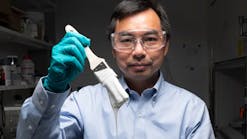Last month, I had the opportunity to attend the 2014 I2SL (formerly Labs21) Annual Conference, an event promoting the sustainable design, construction, and operation of laboratories and related high-technology facilities. The organizer, the International Institute for Sustainable Laboratories, is a non-profit organization devoted to the principles of sustainable laboratories and related high-technology facilities, from design to engineering to operation. For 10 years, it has been “encouraging the development of high-tech facilities that address the rapid pace of science, medicine, research, and development in an ever-changing and dynamic environment.”
Laboratories present particular challenges when we think of sustainability. They are extremely energy-intensive and generally have complex environmental health and safety requirements that must be met, regardless of other factors. For example, at Harvard University, laboratories account for nearly 50 percent of the university’s energy use, but occupy only 23 percent of the space. The list of universities with green-laboratory programs continues to grow (a quick Internet search reveals more than three dozen, many with their own internal “certification” programs). Some of the programs I learned about at the conference include the University of Michigan, UC Santa Barbara, Cornell University, Emory University, the University of Washington, the University of Colorado, and the University of California.
Many of these universities have student competitions to encourage sustainable laboratory practices, such as fume-hood-sash-position contests (reminding college students to close their fume-hood sashes when their hoods aren’t in use is a lot like reminding your kids to turn off the TV when they go outside). And it isn’t just academic laboratories that are getting greener; for example, I learned about the sustainability practices at Eurofins Lancaster Laboratories, one of the largest commercial contract laboratories in the world, which has educated more than 900 of its employees on environmental stewardship and, according to its first formal sustainability report, issued in April, made significant strides in meeting internal sustainability goals.
Also at the conference were equipment manufacturers demonstrating their latest technologies. One especially noteworthy product was an ultralow laboratory freezer using a free-piston Stirling engine in place of a compressor. (Until I saw a demonstration, I thought Stirling engines were just conversation pieces to occupy one’s credenza!) The Stirling Utracold freezer, according to manufacturer Global Cooling Inc., uses the Stirling cycle to expand and compress helium, rather than liquid nitrogen, to provide an oil-free unit using 50 percent less power, producing 50 percent less heat, and pulling down to -80°C in less than seven hours (Global Cooling claims that’s the fastest). It also provides the most storage space per square foot of floor area.
Now that we are learning how to better design and benchmark laboratories (it’s been seven years since Paul Mathew and his colleagues at Lawrence Berkeley National Laboratory developed the first laboratory benchmarking tool), and the equipment unique to laboratories (not just freezers) is becoming more efficient, perhaps the next step is an industry-recognized, consensus-based, green laboratory rating system. Who will take up the challenge?










